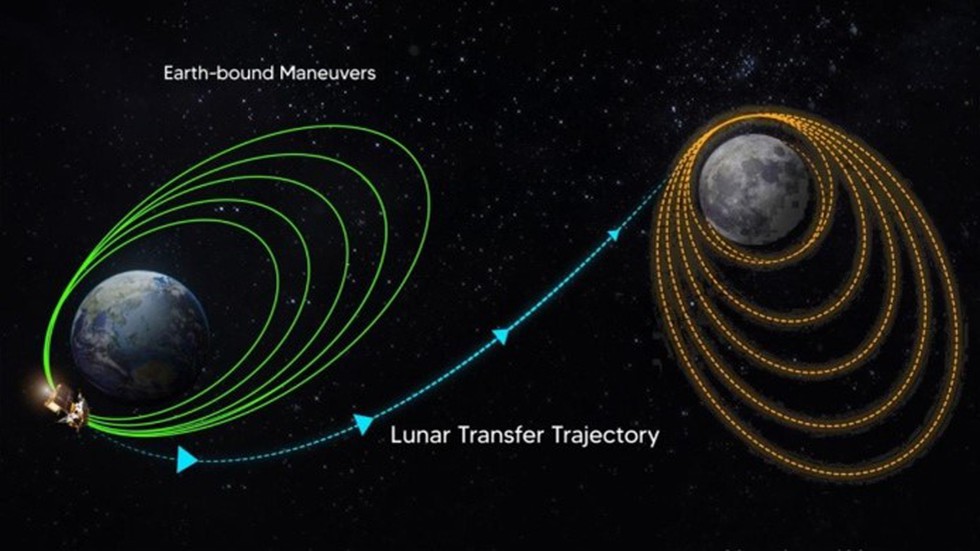About TransLunar Injection (TLI):
- It is a critical manoeuvre performed during space missions to send spacecraft from Earth's orbit to a trajectory that will take them to the Moon.
- It is a key step in lunar missions, enabling spacecraft to escape Earth's gravitational pull and travel to the Moon.
- When is it performed? The TLI is performed when the spacecraft is at a specific point in its orbit known as the ‘perigee’ or the closest point to Earth.
- How is it done?
- During a TLI, the spacecraft's propulsion system fires its engines to accelerate the spacecraft.
- The spacecraft gains enough speed to break free from Earth's gravitational pull and embark on its journey toward the moon.
- The amount of thrust and duration of the TLI burn depends on various factors, including the spacecraft's mass, its velocity in Earth's orbit, and the specific mission objectives.
- What happens next?
- Once the TLI is successfully completed, the spacecraft is put on a lunar trajectory, and it will continue its journey to the Moon without further propulsion from Earth.
- After the TLI, the spacecraft typically enters a transfer orbit, which is an elliptical path that intersects with the Moon's orbit.
- The spacecraft continues to travel in its highly eccentric orbit until it reaches the Moon's surface.
- As the spacecraft approaches the Moon, it may perform additional manoeuvres, such as lunar orbit insertion (LOI), to enter into lunar orbit or land on the lunar surface, depending on the mission's goals.
- The TLI burn has been performed successfully on many missions to the Moon, including the Apollo missions, the Chang'e missions, and the Artemis missions.
